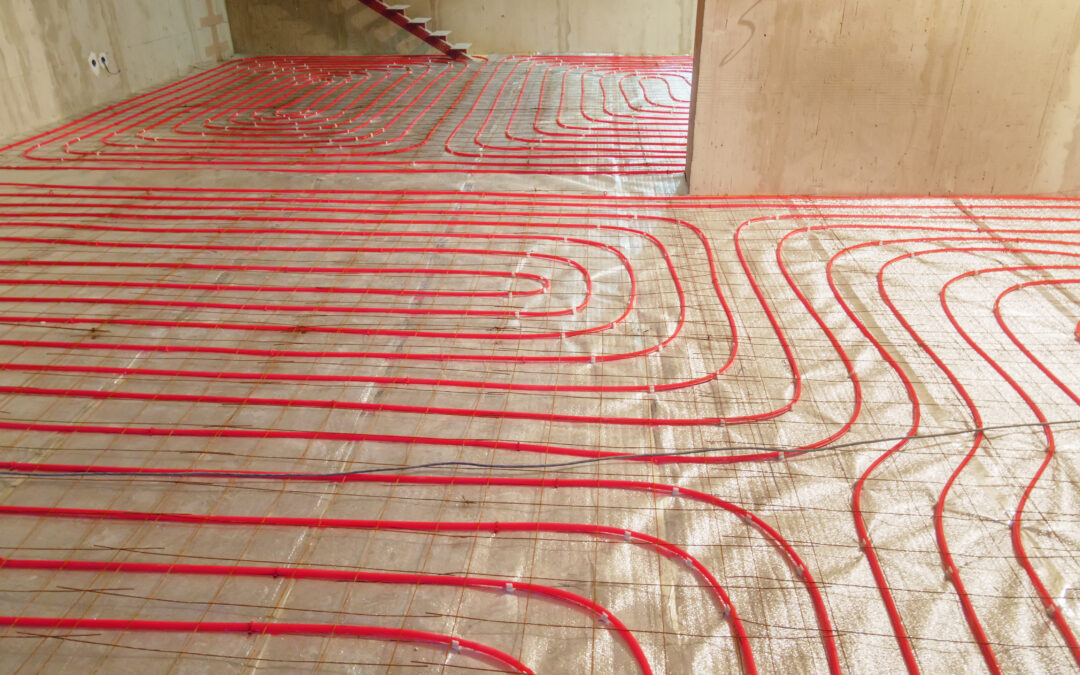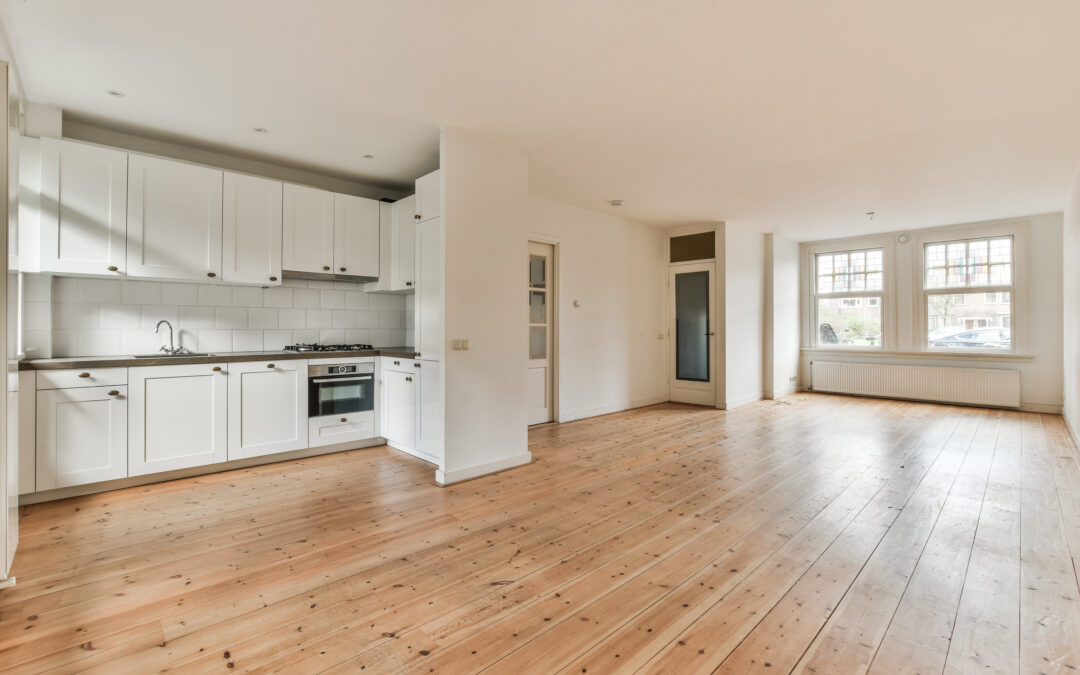Updated 13/11/23
Choosing the best flooring for your bathroom can be a challenge. Bathrooms are famous for creating plenty of moisture. So, the best flooring for the bathroom must be water-resistant. The good news is that with modern flooring technology, you now have a wide variety of flooring choices for the bathroom. But how do you know which flooring is right for you?
You no longer have to ask that question! We’ve created this short guide to help you choose the right flooring for your bathroom.
Flooring Considerations
What do you need to consider when choosing the best bathroom flooring for your home? Here’s a list of things that are necessary when searching for the right flooring.
Waterproof vs. Water-Resistant
Water can cause major damage to bathroom flooring, whether it comes from a tub running over, accidental spills, and more. As you search for the right bathroom flooring, you’ll come across the terms “water-resistant” and “waterproof.” Many people believe these terms mean the same thing, but are not correct. There’s a big difference between water-resistant and waterproof flooring.
The term “water-resistant” is often applied to laminate or wood flooring products. This means the flooring has a special finish or manufacture that means they can resist minor damage, spills, and splashes for a short period. That short period is the time needed to wipe up the spill. Floorings tagged as water-resistant can resist moisture and some damage, but they are ruined if liquids stay on them for long periods.
On the other hand, waterproof flooring means the flooring cannot be damaged by water. These floors are 100% waterproof and resist any spill left on the floor for long periods. However, some types of waterproof flooring can be damaged, such as those that are made of wood. The boards can be damaged by water seeping between them through these small gaps. The water creates puddles under the boards, causing mould and other issues.
As you shop for the right bathroom flooring, it’s essential to understand these two terms. You’ll also need to determine which flooring is best for your bathroom. If you have any questions, be sure to contact a flooring professional. They can help you choose the best flooring for your bathroom.
Size of Bathroom
Your bathroom’s size is essential when choosing the best flooring. For instance, a smaller bathroom will have more footfalls in a concentrated area. That’s important because it means the flooring will wear more during use in a few places, and water spillage could cover about 50% of the surface. In that case, choosing waterproof floorings, such as luxury vinyl tile (LVT), vinyl flooring, or ceramic tiles, for a waterproof solution is important.
For a larger bathroom, the footfall covers a broader area. The flooring will still need to be waterproof; however, water spillage will generally cover a smaller area. For this bathroom, a water-resistant layer is enough protection.
Click or Glue Flooring
The installation process also varies with different types of flooring. You can choose between click or glue flooring for your bathroom. Both installation methods have their own pros and cons to consider.
Glue (Dryback)
Glued flooring (also called dryback) includes LVT or vinyl. These can be installed directly up to the skirting boards or walls of the bathroom. While this installation type doesn’t require an expansion gap, it’s still best to seal the perimeter of the flooring. This helps keep moisture from being trapped under the flooring.
Glue flooring is usually between 2mm to 3mm thick, so it’s easy to scribe around curved or uneven edges, such as the radiator pipes or toilet base.
Click
Click flooring, also called a floating floor, clicks together and is installed on top of the subfloor. Floating floors require an expansion gap wherever the flooring comes into contact with anything (a wall, radiator pipes, toilet). This can be covered by installing beading up to the wall or skirting board.
It’s not possible to attach beading around the base of the toilet. The problem is that the beading is not malleable enough, and there’s no way to attach it. Instead, the gap will need to be filled with sealant. Pipe collars can be used around the base of radiator pipes.
Beading is usually made from MDF and is not waterproof. This type of beading is often used with laminate flooring. If it comes into contact with moisture, it swells and detaches. However, there are ways to keep this from happening. You can paint the beading to improve its appearance for longer. Using beading against a wall is advisable, but avoid using it against the bath or shower tray.
Flooring to Avoid in the Bathroom
There are certain types of flooring that you should avoid using in the bathroom.
Carpet
While carpet is great for creating warm, soft floors, it’s not especially good for the bathroom. The problem is that carpet absorbs moisture from the air, water dripping, and more.
The moisture is absorbed and turns into mould and mildew. They can cause respiratory and allergy issues, damage the subflooring, and more.
Carpet in the bathroom also holds germs; it’s impossible to clean the carpeting thoroughly.
Hardwood & Laminates
Hardwood floors are beautiful in many parts of the homes. These floors add a timeless look and are quite durable. While they can be refinished, they’re not good to use in the bathroom.
To work in the bathroom, hardwood floors must be installed correctly and perfectly sealed to protect them from moisture. If not, water will seep through the flooring, causing rot, mould, damage to the subfloor, and more.
Laminate flooring has the same issues as hardwood flooring, making this a poor choice for the bathroom.
Easy Maintenance
The final consideration is to choose bathroom flooring that’s easy to clean and maintain. For instance, tile can be a great choice for the bathroom; however, the grout needs special care to keep it clean and looking good.
On the other hand, LVT and vinyl are usually easy to care for and maintain. They last for years with proper maintenance.
Summing It Up
As you can see, there’s much to consider when choosing the right flooring for your bathroom. We understand it can be confusing which flooring to choose, especially if you have special requirements. In that case, don’t hesitate to contact us! We’re always happy to answer your questions and help you choose the right flooring for the bathroom or any other room in your home!
Frequently Asked Questions
How to maintain waterproof vinyl flooring?
Proper maintenance involves regular cleaning with a mild detergent and avoiding harsh chemicals. Additionally, promptly addressing spills can prevent stains.
Are ceramic tiles suitable for small bathrooms?
Yes, ceramic tiles work well in small bathrooms, creating an illusion of space. Opt for lighter colors and larger tiles for an expansive feel.
Is marble flooring high-maintenance?
While marble requires more care than other options, routine cleaning and sealing can keep it looking pristine. Avoid abrasive cleaners to prevent damage.
Can porcelain tiles mimic the look of natural materials?
Absolutely! Porcelain tiles can convincingly replicate the appearance of natural stone or wood, providing a versatile and cost-effective alternative.
What’s the average lifespan of vinyl flooring?
With proper care, waterproof vinyl flooring can last up to 20 years or more. Regular cleaning and avoiding sharp objects can extend its lifespan.
Are there eco-friendly options for bathroom flooring?
Opt for sustainable materials like bamboo or cork for an eco-friendly bathroom. These materials are renewable and add a natural touch to your space.



